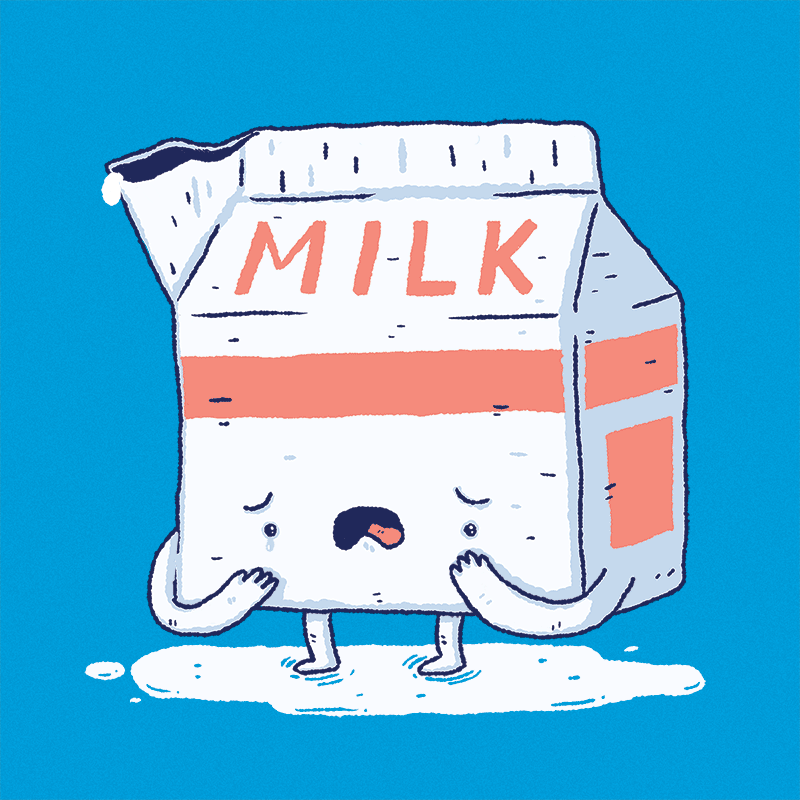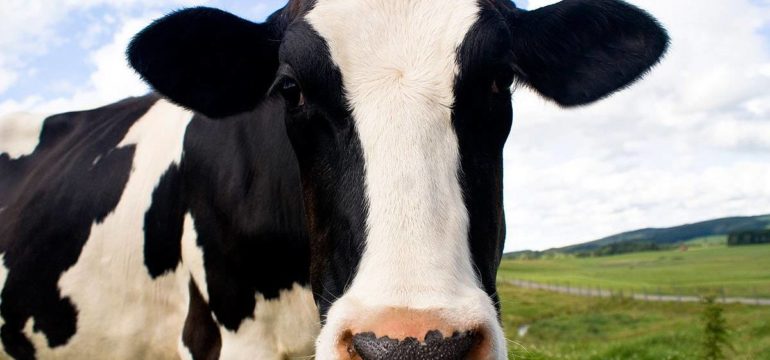BY: PRAVEENA THIRUNATHAN
Introduction
The year is 2008. I’m a very impressionable 14 year old, sitting in class listening to my friends talk about their weekend.
14 year old friend: “My family and I crossed the Canada/US border to shop at the outlet stores near Seattle! We also went to Costco to stock up on milk.”
14 year old me: “Why would you buy American milk, isn’t it full of hormones?”
14 year old friend: “Who cares, it’s super cheap compared to the milk in Vancouver. Plus we have a lot of baking coming up and my mom wants all the milk she can get.”

https://giphy.com/gifs/art-animation-animated-pStZ71z14R2Ks
After that conversation, 14 year old me decided to accompany my mom to the supermarket to inspect the dairy prices. While I usually went with my mom to pick out my favorite snacks, this time I paid close attention to the prices of our products. A litre of milk cost CAD$2.50, and converted to USD and gallons, that would be US$7.76 a gallon.
14 year old me: ‘Not so bad,’ I thought, until I asked my friend what her family paid for their American milk.
14 year old friend: “Oh it cost us around US$3.50 a gallon for milk, which is like 4 litres. Isn’t that amazing?”

My face when I heard this-
https://giphy.com/gifs/shocked-surprise-LJPfWhMCs9Rks
With this stunning revelation (and a bit of research to find out why our milk was so expensive), I was introduced to the term “supply management”, aka the subject of this article.
Background
Supply management is a term used by the Canadian government to describe the control of prices for a specific commodity. In Canada, we use supply management to control the prices of eggs, milk, turkey and chicken. The way it works is that supply management is based around three central pillars: 1) import control (placing high tariffs on foreign imports); 2) production control (national agencies for each industry set a production quota and farmers are punished for over- or underproduction); and 3) pricing mechanisms (price fluctuations are minimized and farmers are given a guaranteed minimum price for their product) [1].
Now for a quick economics review: Truly free markets are rarely perfect. A rise in demand leads to a short supply and rising prices for a good, whereas a fall in demand leads to cheap prices but excess product. However, by utilizing strategies like supply management, fluctuations in the market can be minimized, and farmers won’t have to worry about going bankrupt while making a living growing chickens or making dairy products.

https://giphy.com/gifs/gw3EWhkxeadcBE7S
History
While the Canadian government has been involved in the dairy industry since the appointment of the Dominion Dairy Commissioner way back in 1890, it wasn’t until 1935 that official government subsidies for cheese and butter were first introduced [2]. This evolved into more extensive government programs to control production and limit dairy imports during the 40s and 50s. In the 60s, Canada’s largest dairy export customer, the UK, was thinking of joining the European Economic Community (EEC). If the UK joined the EEC, Canada would lose a majority of their dairy sales, thus the dairy farmers cried out for help. Thus, the Canadian Dairy Commission (CDC) was founded in 1966 with the explicit intent to protect Canadian dairy farms across the country from turbulent market conditions. They started to develop the precursors to the current supply management system, setting controls for subsidies and exports. Finally, the National Milk Marketing Plan was implemented in 1970 [2], with the intent to control production and protect Canadian dairy from foreign competition by imposing high tariffs on imports. Similar plans were subsequently put into place for eggs, turkey and chicken. In 1995, the formation of the World Trade Organization agreement caused several export subsidies to be eliminated, in order to be fair to the other nations, causing the CDC to refine the supply management system into its current form [3].
Benefits and Criticism
So far, we can see that this system overwhelmingly supports the dairy (and other) farmers and producers across the country. By not having to worry about the vagaries of the market, they’re free to produce whatever they need to meet their quota, while being guaranteed that they’ll receive a minimum price for their product. Unlike other farmers, who may be at the mercy of the free market, the elements, and poor crop yields, this gives tremendous stability and comfort to Canadian dairy farmers.
However, with this protection of farmers also comes high milk prices for consumers. The question is, is that really beneficial for the rest of the country? Nations such as New Zealand, the USA, and the UK have made numerous trade complaints about the protectionist policies of Canadian dairy, and want Canada to open up their dairy market. The USA in particular is quite incensed, for until 2016, they were able to export their ultra-filtered protein-rich milk to Canada for cheese and yogurt production. However, the dairy farmers caught wind of this, and lobbied for the development of an “industrial milk” category that would function similarly to the ultrafiltered milk from the US. Once this category was developed, Canadian industrial milk was used to make yogurt and cheese, and US imports of ultra-filtered milk dramatically declined [4].
Critics say that this system was designed to keep the lights on in rural Quebecois villages, their economies reliant on the bounty produced by the local dairy farmers. So isn’t that a good thing? Though the current system may result in high prices for consumers, at least we’re keeping dairy farmers employed…right? The reality is that the number of dairy farms across Canada have decreased from 145,000 (at the start of supply management), to less than 9,000 today, due to farmers aging out and children unwilling to carry on the family farm [5]. Most of these farms are concentrated in Quebec and Ontario, as not only do they have the landscape and resources to raise dairy cows, they also have the largest populations in Canada to support the increased number of dairy farms. The supply management system has also been criticized as consolidating money from the poor to the rich, as in 2015 the average net worth of a dairy farm reached $4 million [3]. On top of that, farmers who would like to enter the dairy business need to buy their minimum quota, which results in a cost that bars many would-be dairy farmers from starting their own dairy farm.

All the dairy farmers-
https://giphy.com/gifs/canada-ySy0HGn0lmGcg
Other reasons for keeping the supply management system include: 1) the inability of Canadian farmers to compete with subsidized US dairy producers, 2) fears of hormone-laden US milk flooding the Canadian markets, and 3) even how our cold white north can’t compete with the warmer pastures of the United States, with longer growing seasons and potentially higher dairy production. Martha Hall Findlay, the president and CEO of the Canada West Foundation, a Canadian think tank, puts to rest all these claims [5]. She notes that dairy subsidization has been reduced in the United States, allowing them to export even more dairy around the world. In the case of hormones, while US dairy farmers do sometimes use hormones on their dairy herds, the same can be said of Canadian beef ranchers using hormones on their beef herds 1. Besides, Canada could limit the import of US milk to be hormone-free. Finally, many states in the US have similar climates to Southwestern Ontario and Southern Quebec, including Vermont, Maine, and Wisconsin, which doesn’t stop their dairy production at all.
Before we start getting anxious about hormones in our food, it’s important to note that hormones are naturally present in our bodies, as well as animals. The FDA has evaluated the use of Bovine Somatotropin (bST) to increase milk production in cows. After numerous studies showing that bST doesn’t pose a risk to cattle or to the humans who consume the milk, the FDA has approved it for use (in the United States) [6]. While Health Canada does not approve of bST, this is because higher milk production can lead to increased incidences of mastitis (inflammation of the cow udder) in lactating cows. It’s not the bST that causes this, it’s the increased milk production that causes mastitis [7]. As for hormones in other Canadian products, only approved growth hormones are allowed to be used in beef cattle. No hormones are allowed for chicken, pork, and milk production [8].
After hearing all this, you may think that it’s time to put a sledgehammer to the supply management system and abolish it once and for all. However, it’s not that easy, seeing as the system is supported by all three major Canadian political parties: Conservatives, Liberals, and the New Democratic Party (NDP). While there are outliers in each party advocating for the abolishment of supply management, the dairy lobby is powerful, ensuring that political parties will only get their support if supply management stays in place [9]. In addition to its political support, Sylvain Charlebois, a professor in food distribution and policy at Dalhousie University, notes that due to the high cost of quotas (worth over $30 billion), a complete abolishment of the supply management system would result in the Canadian dairy industry collapsing under the weight of all the US dairy imports [10]. While our artificially high milk prices are a good reason to dismantle the system, we do pay less per litre of milk than the people of Norway and China (then again, the Chinese do not drink as much milk as we do, or eat as much cheese) [11]. In addition, the cost of deregulation can be huge, as Dr. Bruce Muirhead found out. As a professor of history at the University of Waterloo, he traveled around Australia and New Zealand to explore the effects of their system deregulation, and found that not only were farmers leaving the dairy industry en masse, the government also had to bail out farmers affected by trade with China, since China reduced demand by stockpiling NZ powdered milk [11]. Dr. Charlebois notes that after deregulation, prices may go down for Canadians, but they will almost certainly rise back up higher than before due to new market strains, as exhibited in New Zealand and South Korea [12].

Everyone wants milk-
https://giphy.com/gifs/4MVNwnVEsxpBK
Conclusion
In conclusion, supply management is definitely an interesting system to think about, both it’s protection of local farmers, and in the role it plays in our increasingly globalized trade market. While I’m not sure if deregulation is the best choice for us Canadians right now, I do know that if it does come to pass, careful measures should be taken to make sure that neither our dairy industry nor our farmers come crashing down at our feet.
References
-
Heminthavong, Khamla. 2015. “Canada’s Supply Management System.” LIBRARY OF PARLIAMENT RESEARCH PUBLICATIONS. December 17, 2015. https://lop.parl.ca/Content/LOP/ResearchPublications/2015-138-e.html?cat=agriculture#ftn3.
-
Western Dairy Digest. 1999. “A Brief History of Supply Management in Canada,” 1999.
-
Snyder, Jesse. 2017. “‘Cheese Ninjas’ to the Rescue: Why Canada’s Supply Management System Needs Reform.” Financial Post, December 20, 2017. http://business.financialpost.com/commodities/agriculture/cheese-ninjas-to-the-rescue-why-canadas-supply-management-system-needs-reform.
-
McKenna, Barrie. 2017. “A Guide to Understanding the Dairy Dispute between the U.S. and Canada.” The Globe and Mail, November 12, 2017. https://www.theglobeandmail.com/report-on-business/a-guide-to-understanding-the-dairy-dispute-between-the-us-andcanada/article34802291/.
-
Findlay, Martha Hall. 2017. “Canada’s Supply Management System for Dairy Is No Longer Defensible.” The Globe and Mail, August 21, 2017. https://www.theglobeandmail.com/report-on-business/rob-commentary/canadas-supply-management-system-for-dairy-is-no-longer-defensible/article36029788/.
-
Center for Veterinary Medicine. 2018. “Product Safety Information – Bovine Somatotropin (BST).” FDA. US Food and Drug Administration. 2018. https://www.fda.gov/AnimalVeterinary/SafetyHealth/ProductSafetyInformation/ucm055435.htm.
-
Frédéric Forge. 1999. “RECOMBINANT BOVINE SOMATOTROPIN (RbST).” Parliamentary Research Branch. 1999. http://publications.gc.ca/collections/Collection-R/LoPBdP/BP/prb981-e.htm.
-
Canada, Health. 2012. “Questions and Answers – Hormonal Growth Promoters.” Education and awareness. Health Canada. September 5, 2012. https://www.canada.ca/en/health-canada/services/drugs-health-products/veterinary-drugs/factsheets-faq/hormonal-growth-promoters.html.
-
Aaron Wherry. 2015. “Why the Dairy Lobby Is so Powerful.” Macleans, October 5, 2015. http://www.macleans.ca/politics/ottawa/why-the-dairy-lobby-is-so-powerful/.
-
Charlebois, Sylvain. 2017. “The Many Failings of Canada’s Supply-Management System Are Government’s Fault, Not Farmers’.” The Globe and Mail, April 23, 2017. https://www.theglobeandmail.com/report-on-business/rob-commentary/the-many-failings-of-canadas-supply-management-system-are-governments-fault-not-farmers/article34793275/.
-
Powers, Lucas. 2016. “Do Canadians Really Pay More for Milk? | CBC News.” CBC, June 3, 2016. http://www.cbc.ca/news/business/milk-dairy-cost-supply-management-1.3612834.






Leave a Reply